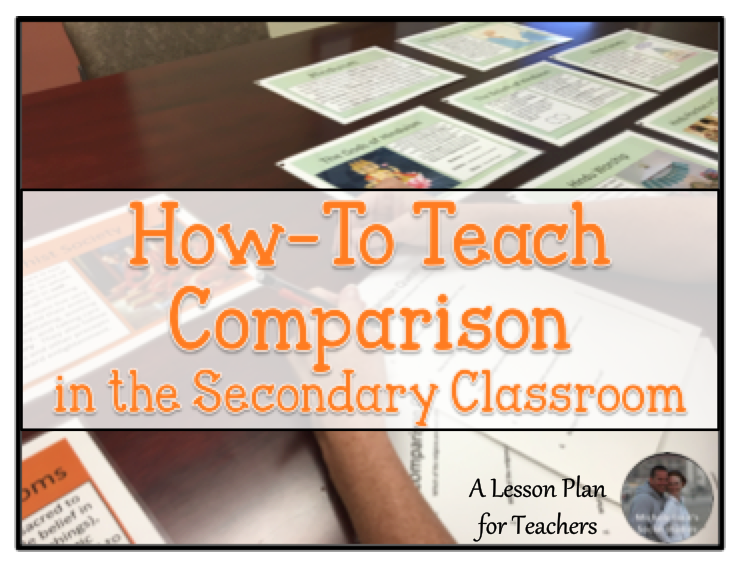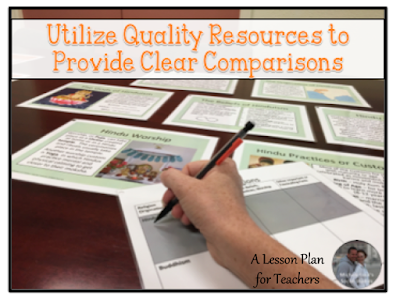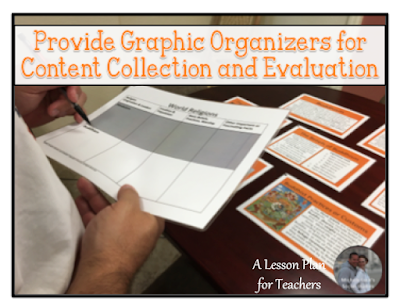Teaching comparison in the secondary classroom is a requirement, but it can also be a great challenge. Students are easily frustrated with an open-ended assignment, and they are often flustered with the task of finding comparison criteria when not provided clear direction and content-strong resources.

Here are a few simple steps to find comparison success.
- Find quality resources with content-strong readings that allow students to step into comparison tasks with clear direction and objectives.

- Arrange centers that organize the content in ways that will help students see the categories for comparison. Discuss categories at the beginning of the activity for early comparison learners.
- Provide graphic organizers that allow students to select and sort information as they visit each center. Check on student progress as they visit each center and redirect as needed.

- Utilize clear wrap-up questions that push students into small group discussion on the topics for comparison. Encourage thorough discussion and conflicting points of view.
- Outline expectations for topic comparison and assign writing tasks with choice options. In the example shown, students can compare overall religions or can make comparisons between individual categories among all presented religions.
- Allow students to share ideas and to report out conclusions to wrap up the activity and to reinforce the content. Hang big paper at each center for students to leave comments and access feedback from other students (and you!).
- Review as a whole class to discuss the main points for understanding and to examine the comparisons made for strengths and weaknesses.
While learning the task of comparison can be a daunting task, it can be easy when the right tools and steps are followed!
*My World Religions Comparison Centers Activity is the example shown in this post.
And be sure to see my other How-To posts for making your secondary classroom interactive, engaging, and fun!

Happy Teaching!